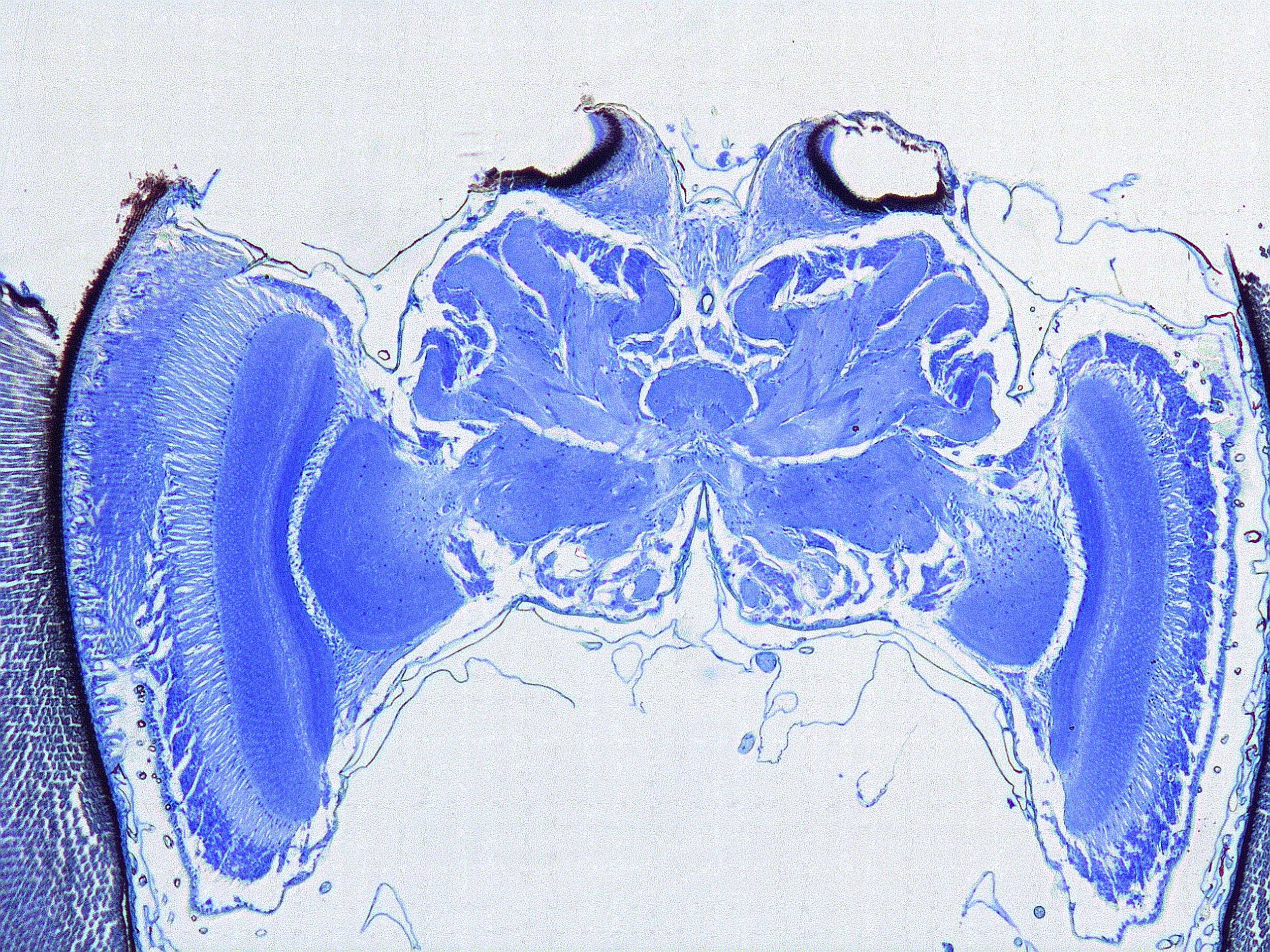
Breaking new ground in insect neurobiology & welfare
Our research
We are a team of neuroanatomists and physiologists using an interdisciplinary lens to address big questions in insect biology.

WELFARE
We use techniques from ethology, neuroscience, and physiology to understand the welfare concerns insects face wherever they are used or managed, with a particular focus on insects as food and feed. Our goal is to inform best practices for producers and other stakeholders to improve insect welfare.
Themes in our work:
SENSORY SYSTEMS
We explore how insects' sensory systems evolved, or change plastically, in response to the cognitive demands of their environments or behaviors. Our goal is to better understand the relationships between the brain, the body, and diverse behaviors in arthropods.
THERMAL PHYSIOLOGY
We explore insects' adaptations to extreme heat and solar radiation, with a particular interest in desert arthropods. Our goal is to better understand how insects may respond to, or are threatened by, a changing climate.
Explore a few of our latest projects:
Featured Project
Impacts of feeding on welfare and reproduction of adult black soldier flies (Hermetia illucens)
Trillions of black soldier flies are reared annually, with adults used primarily as breeders; despite the number we farm, little is known about appropriate diets for adult flies.
A misconception about farmed adult black soldier flies is that they cannot eat; however, adults have functional mouthparts that link up with functional digestive systems with all the required enzymes for protein and carbohydrate catalysis. When carbohydrates are provided, adults gravitate towards and consume it - and this extends their lifespan. Despite the evidence that adults can and do eat, little work has been done to optimize adult diets for welfare or production reasons.
In this study, we demonstrate that adult black soldier flies prefer molasses as a carbohydrate source and heat-inactivated yeast as a protein source in a 1 : 4 or 1 : 8 yeast to molasses ratio (with a 5% molasses concentration in water). Flies in cages provided with the 1 : 8 ratio diet lived 25% longer, were observed mating more frequently, and had a 3.8-fold increase in egg production in the first 8 days of life. This study is a stepping-stone to further dietary optimization that could improve welfare and production for farmed BSF.
Featured Project
Grinding as a slaughter method for farmed black soldier fly (Hermetia illucens) larvae: Empirical recommendations to achieve instantaneous killing.
At least 200 billion black soldier fly larvae (BSFL) are reared each year as food and feed. The insect farming industry is projected to grow rapidly.
Despite interest by consumers, producers, and legislators, no empirical evidence exists to guide producers in practicing humane – or instantaneous – slaughter for these novel mini-livestock. BSFL may be slaughtered via freezing, boiling, grinding, or other methods; however standard operating procedures (SOPs) and equipment design may affect the likelihood of instantaneous death using these methods.
We develop a grinding SOP for producers that results in a high percentage of instantaneous death (up to 99%) irrespective of larval body size (across a specified range of masses). We also develop a protocol for producers that wish to test their own grinding SOPs.
Featured Project
Farmed Yellow Mealworm (Tenebrio molitor) Welfare: Species-Specific Recommendations for a Global Industry
Yellow mealworms are currently the most farmed holometabolous insect species in the insects as food and feed industry, with over 300 billion individual mealworms reared annually.
No studies have considered the species-specific welfare concerns of farmed yellow mealworms under current industry conditions. We explore factors related to yellow mealworm welfare in commercial rearing facilities, including: interspecific interactions, abiotic conditions, nutrition, intraspecific concerns, slaughter/stunning, and depopulation methods.
We identify practical recommendations for improving current welfare concerns in the industry, such as increasing supplemental protein levels for larvae, the use of red lights during handling to avoid stress linked to photophobia, and recommendations for abiotic rearing conditions. We also discuss future concerns that may appear as the industry continues to grow and identify the most important future research directions in farmed yellow mealworm welfare.

A Better Future for Insects and One Another
Our research has the potential to improve our understanding of the insect experience and promote better welfare for trillions of animals each year.
Alongside our dedication to understanding insects’ senses and improving insect welfare, we aim to produce knowledge that can help reduce labor and cost, increase public trust, promote reproducibility, create product differentiation opportunities, and ultimately ensure that policies and practices are evidence-based.





